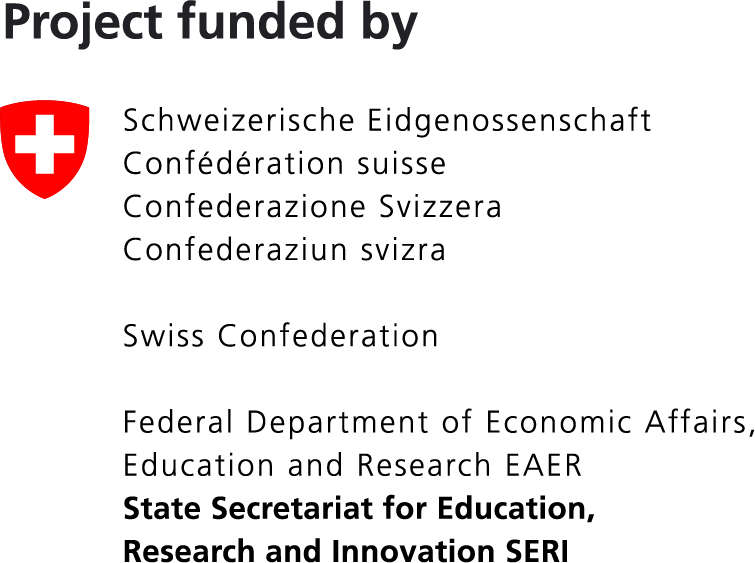Sarajevo (Bosnia & Herzegovina)
Replication City
Information
Urban Mobility Lab Sarajevo
Sarajevo, the capital of Bosnia and Herzegovina, is an administrative, economic, cultural, and academic center in which more than half a million inhabitants live in the metropolitan area. The previous two decades were characterised by significant population migration to Sarajevo, and the construction of residential areas as well as commercial facilities in the central urban part of the city. In the past period, significant funds were invested in the construction of the necessary communal and social infrastructure, and reconstruction and modernisation of infrastructure systems, including traffic infrastructure, so that with the increased degree of motorisation, the increased number of residents and tourists, and observed increased need for mobility, ensured the smooth functioning of the capital of Bosnia and Herzegovina.
The city of Sarajevo attaches great importance to the increase quality of life through activities aimed at reduction of harmful gas emissions, reduction use of personal vehicles, increase in use of non-motorised traffic, increase in use public transport services as well as an increase its qualities, reduction of energy consumption, interactive cooperation, financial savings, increasing mobility (availability and accessibility), more effective use of limited resources (space, energy), which is in line with the vision of the Sarajevo Canton Sustainable Urban Mobility Plan, and the City of Sarajevo (SUMP).
Here are some of the main mobility challenges that Sarajevo faces:
Use of private cars
The metropolitan area of Sarajevo, like most European metropolises, is burdened with intense individual motor traffic due to the use of individual vehicles by residents, as well as residents of other municipalities from neighboring cantons who travel to Sarajevo daily. While private cars offer flexibility and convenience, they contribute to traffic congestion and environmental issues.
Traffic congestion
Growing populations, inadequate infrastructure and a high reliance on private vehicles are some of the main causes of traffic congestion in Sarajevo. Congestion leads to more traffic accidents, air and noise pollution and increases travel time.
Air pollution
In the last few years, Sarajevo has been one of the most polluted cities in the world in some periods during the winter. Urban transport is a significant contributor to air pollution and greenhouses gas emissions. Private vehicles emit pollutants that harm air quality and contribute to climate change.
Lack of parking spaces
The problem of parking in the central city area and in residential areas with high densities is extremely present. These problems are increasing over time due to the increased number of passenger cars and mobility, and it is not followed by organised activities in traffic policy inSarajevo and investments in development space for stationary traffic, as well as modern management of stationary traffic.
Use cases
Prioritize public transport
Increasing the attractiveness and efficiency of the public transport service (comfort, speed, cleanliness, the absence of crowds in public transport vehicles) also enables a change in the awareness of citizens who will understand that it is better to use public city transport instead of driving in their own vehicle and looking for a parking space and pay for using it.
Also, with the increased use of public city transport, there is a decrease in the use of individual vehicles in urban areas which would directly affect the reduction of traffic jams and pollution.
By investing in transport infrastructure, modernising the fleet, introducing an electronic ticket collection system, creating an application for smartphones that will provide citizens with information about public city transport, the Canton of Sarajevo is trying to improve the public transport service and encourage people to use it.
Cycling and walking infrastructure
Establishing an interconnected and functional network, bicycle paths and parking lots and a system of public bicycles, as well as ensuring adequate space for pedestrians on existing streets can improve safety, reduce traffic congestion, and promote healthier and greener travel options.
Adaptive traffic management system
The construction of a modern adaptive management and traffic control system includes components of an intelligent management system with priorities of public passenger transport.
Canton Sarajevo has started an adaptive traffic management project aimed at reducing traffic congestion and pollution and prioritizing tram traffic. The adaptive traffic management system will be based on modern sensor equipment, which will record traffic in real time, thus providing detailed information for further planning of the traffic infrastructure, measuring traffic intensity at intersections, based on which an algorithm will be developed that will manage the traffic lights.
Electrification
Promoting the use of electric vehicles can significantly reduce emissions and improve air quality. Incentives such as subsidies, charging infrastructure development and implementing low emission zones can encourage the adoption of electric vehicles and cleaner transportation options.
Canton of Sarajevo launched the project of developing a conceptual solution for the establishment of a low emission zone in the city core.
Role in MOBILITIES FOR EU
The main idea of building our living lab is to improve urban mobility which is in line with the MOBILITIES FOR EU project.
Partners
Ministry of Traffic of the Canton of Sarajevo
Faculty of Transport and Communications of the University of Sarajevo
Contact Information
Amila Vrbić
amila.vrbic@ms.ks.gov.ba


